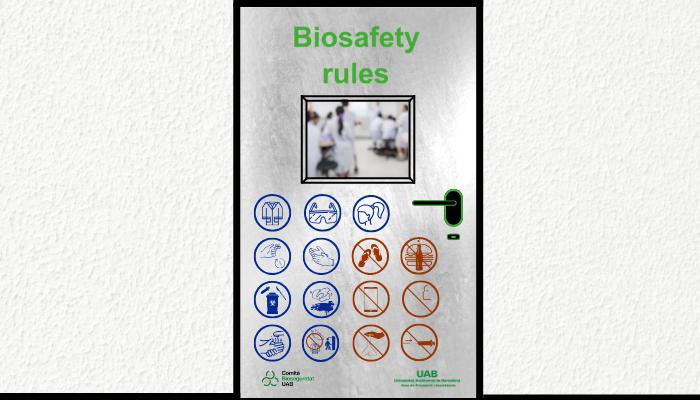Teaching laboratories

Educators must be aware of the risks inherent in the use of microorganisms or material that could potentially contain them and will promote good practices to minimize the risk to students and the environment and, at the same time, promote a culture of biosafety that complete the training of future professionals. In order to advise instructors on the design of safe practices, the IBC and the Health&Safety Service have prepared the "Guia de seguretat per al professorat responsable de pràctiques docents".
In general, teaching practices are carried out with a large number of students (20-25) and with little experience in the experimental procedures to be developed. This characteristic means that the activities proposed by the instructor must have the minimum possible risk and that happens by using well-characterized and minimally dangerous microorganisms. Teaching lab conditions will be similar to those of a BSL1, that is, with surfaces resistant to decontamination, lockable door, sink and lockers for storing street clothes. Risk control measures will focus mainly on the use of protective gowns and goggles, application of good microbiological practices as well as the more specific ones that can be determined according to the experimental procedure to be carried out.
Further information.
- Guidelines for Biosafety in Teaching Lab ASM update 2019
- Biosafety in the Elementary, Intermediate, and Secondary School Classroom (PHAC 2020).
- Containment Level 1: Physical Design and Operational Practices (PHAC 2017)
- Basic practical microbiology: a manual (SGM 2016)